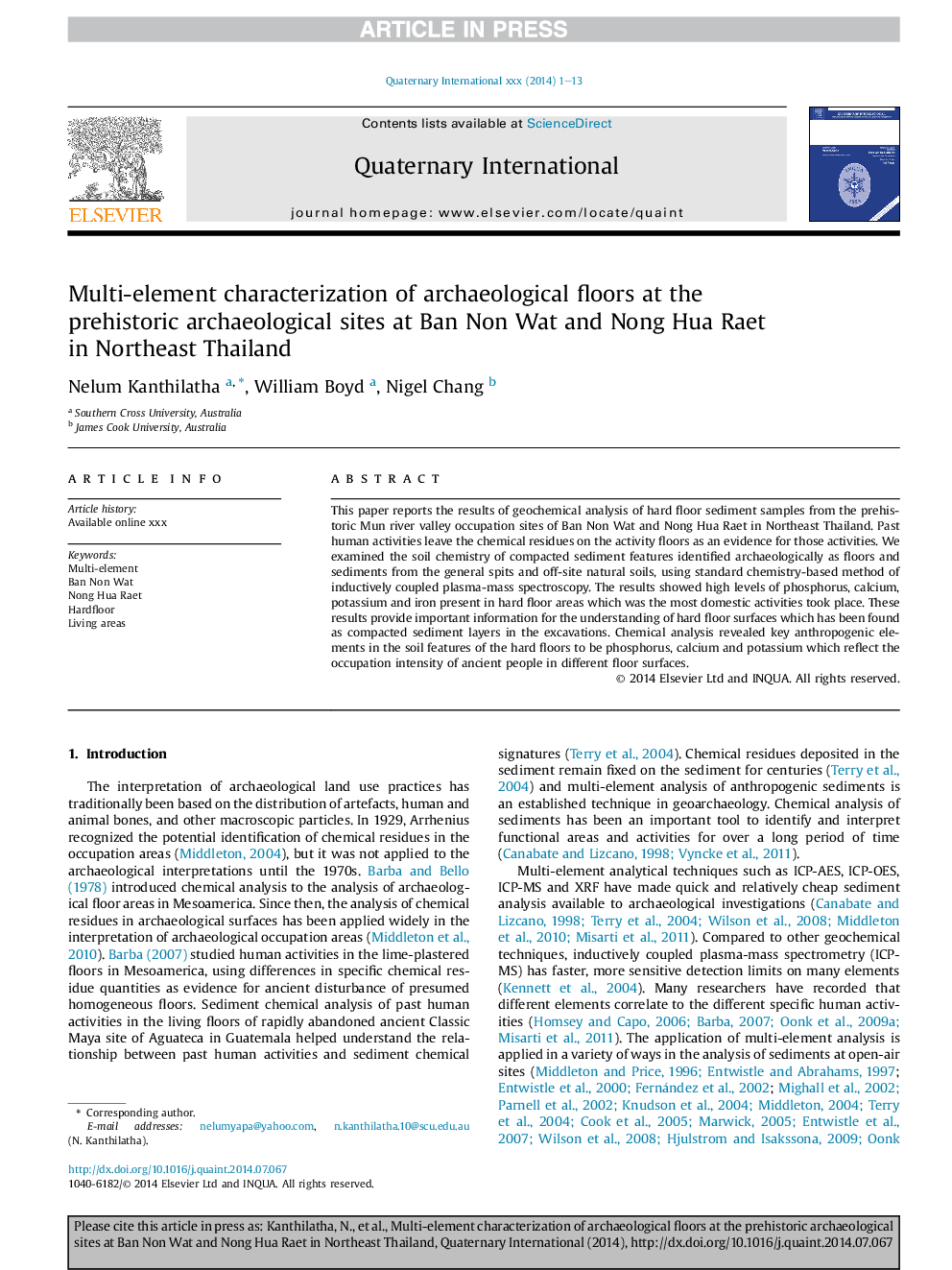| Article ID | Journal | Published Year | Pages | File Type |
|---|---|---|---|---|
| 5113451 | Quaternary International | 2017 | 13 Pages |
Abstract
This paper reports the results of geochemical analysis of hard floor sediment samples from the prehistoric Mun river valley occupation sites of Ban Non Wat and Nong Hua Raet in Northeast Thailand. Past human activities leave the chemical residues on the activity floors as an evidence for those activities. We examined the soil chemistry of compacted sediment features identified archaeologically as floors and sediments from the general spits and off-site natural soils, using standard chemistry-based method of inductively coupled plasma-mass spectroscopy. The results showed high levels of phosphorus, calcium, potassium and iron present in hard floor areas which was the most domestic activities took place. These results provide important information for the understanding of hard floor surfaces which has been found as compacted sediment layers in the excavations. Chemical analysis revealed key anthropogenic elements in the soil features of the hard floors to be phosphorus, calcium and potassium which reflect the occupation intensity of ancient people in different floor surfaces.
Keywords
Related Topics
Physical Sciences and Engineering
Earth and Planetary Sciences
Geology
Authors
Nelum Kanthilatha, William Boyd, Nigel Chang,
